Doubling Down on Known Protein Families
Through a novel approach detailed in Nature, a massive computational analysis of microbiome datasets focuses on unveiling protein functional diversity. [Read More]
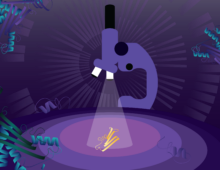 Through a novel approach detailed in Nature, a massive computational analysis of microbiome datasets focuses on unveiling protein functional diversity. [Read More]
Through a novel approach detailed in Nature, a massive computational analysis of microbiome datasets focuses on unveiling protein functional diversity. [Read More]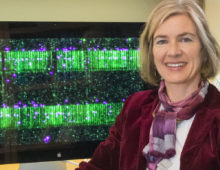 Jennifer Doudna and Emmanuelle Charpentier were recognized for their work on CRISPR-Cas9, technology described by the Nobel Foundation as having “a revolutionary impact on the life sciences.” For the past few years, Doudna’s lab has partnered with JGI’s Microbiome Data Science group led by Nikos Kyrpides, mining the IMG/M system for novel Cas genes and CRISPR systems. [Read More]
Jennifer Doudna and Emmanuelle Charpentier were recognized for their work on CRISPR-Cas9, technology described by the Nobel Foundation as having “a revolutionary impact on the life sciences.” For the past few years, Doudna’s lab has partnered with JGI’s Microbiome Data Science group led by Nikos Kyrpides, mining the IMG/M system for novel Cas genes and CRISPR systems. [Read More] Metagenomic analysis emphasizes the “extraordinary microbial novelty” of poorly-explored subsurface ecosystems The Science Through metagenomics, researchers reconstructed a dominant organism and member of a new phylum-level lineage from an aquifer sediment in Colorado. The Impact Analysis of the complete microbial genome led to a detailed metabolic model with evidence for multiple new enzymes and pathways…. [Read More]
Metagenomic analysis emphasizes the “extraordinary microbial novelty” of poorly-explored subsurface ecosystems The Science Through metagenomics, researchers reconstructed a dominant organism and member of a new phylum-level lineage from an aquifer sediment in Colorado. The Impact Analysis of the complete microbial genome led to a detailed metabolic model with evidence for multiple new enzymes and pathways…. [Read More]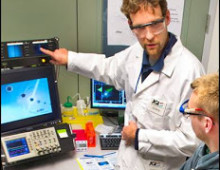 Microbes facilitate many of the natural cycles in plant growth and health, and play roles in many processes in nutrient cycles that control certain environments and climates. Though thousands of these microbes have been identified, the majority of these microbes are still a mystery to scientists and are referred to as microbial “dark matter.” Steps… [Read More]
Microbes facilitate many of the natural cycles in plant growth and health, and play roles in many processes in nutrient cycles that control certain environments and climates. Though thousands of these microbes have been identified, the majority of these microbes are still a mystery to scientists and are referred to as microbial “dark matter.” Steps… [Read More]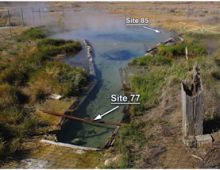 Metagenomicsand single-cell genomics are tools helping researchers learn more about the “biological dark matter” that has not been cultivated and studied in the laboratory. In an article published May 14, 2013 in Nature Communications. [Read More]
Metagenomicsand single-cell genomics are tools helping researchers learn more about the “biological dark matter” that has not been cultivated and studied in the laboratory. In an article published May 14, 2013 in Nature Communications. [Read More]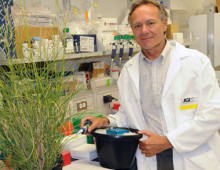 The DOE Joint Genome Institute is also a national user facility focused on developing tools that more cost-effectively enable the assembly and analysis of the sequence that it generates. [Read More]
The DOE Joint Genome Institute is also a national user facility focused on developing tools that more cost-effectively enable the assembly and analysis of the sequence that it generates. [Read More] Driven in part by the increased emphasis to give life sciences students hands-on experience in “real research,” the DOE Joint Genome Institute’s Genomics and Bioinformatics Education Program developed a series of educational modules for undergraduate programs to explore and annotate publicly available microbial genome datasets. Known collectively as the Integrated Microbial Genomes Annotation Collaboration Toolkit… [Read More]
Driven in part by the increased emphasis to give life sciences students hands-on experience in “real research,” the DOE Joint Genome Institute’s Genomics and Bioinformatics Education Program developed a series of educational modules for undergraduate programs to explore and annotate publicly available microbial genome datasets. Known collectively as the Integrated Microbial Genomes Annotation Collaboration Toolkit… [Read More]